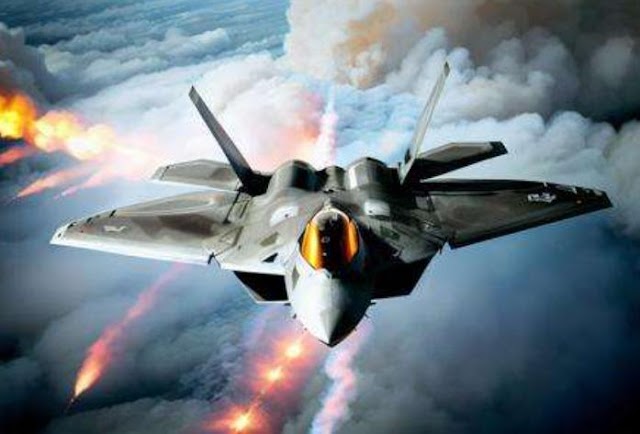Sukhoi Su-30:
Role: Multirole fighter, air superiority fighter
Origin: Russia / India
Design Company: Sukhoi
Number built: 272 as of March 2020[1][2]
Variants: Sukhoi Su-30MKM, Sukhoi Su-30MKA
- Introduction:
- The Sukhoi Su-30MKI, NATO designation Flanker-H, is a state-of-the-art, two-seater air superiority fighter
- Jointly developed by Sukhoi and licensed to Hindustan Aeronautics Limited (HAL) for the Indian Air Force (IAF).
- A multirole aircraft, it stems from the Sukhoi Su-30 family, known for its heavy, all-weather, and long-range capabilities.
- Development and Licensing:
- Collaboration between Sukhoi and HAL, blending Russian aeronautical expertise with Indian manufacturing finesse.
- Strategic partnership to meet stringent IAF requirements, creating an advanced and versatile fighter.
- Key Features:
- Distinctive features set the Su-30MKI apart within the Sukhoi Su-30 family.
- Versatility as a multirole fighter, excelling in air superiority missions and adapting to various combat scenarios.
- Technological advancements position it as a formidable force in modern aerial warfare.
- Operational Significance:
- Game-changer for the Indian Air Force, enhancing operational capabilities.
- Significant contribution to strategic objectives, crucial in strengthening national defense.
- Demonstrates operational significance in safeguarding Indian airspace.
- Overall Description
The Sukhoi Su-30MKI epitomizes successful international collaboration and cutting-edge technology.
- Operational prowess within the Indian Air Force underscores its significance in fortifying the nation's air defense capabilities
- Development Timeline:
- The Su-30MKI variant's development commenced in 2000 following India's agreement with Russia to manufacture 140 Su-30 fighter jets.
- The inaugural Russian-made Su-30MKI was inducted into the Indian Air Force (IAF) in 2002, with the first domestically assembled Su-30MKI joining service in November 2004.
- As of January 2020, the IAF's inventory boasts nearly 260 Su-30MKIs, affirming its pivotal role in the air fleet.
- Tailor-Made for Indian Needs:
- Specifically designed to meet Indian specifications, the Su-30MKI seamlessly integrates Indian systems and avionics.
- Additionally, the aircraft incorporates French and Israeli sub-systems, enhancing its technological capabilities.
- Strategic Significance:
- The Su-30MKI is strategically vital, resembling the Sukhoi Su-35 in numerous features and components.
- Positioned as a cornerstone in the IAF's fighter fleet, it is projected to maintain this pivotal role beyond 2020.
- Overall Description
This succinct overview highlights the key milestones in the Su-30MKI's development, its customization to Indian requirements, and its strategic importance within the IAF's arsenal.
- Origins in Su-27 Family:
- The Su-30 originated as an internal development project within the Sukhoi Su-27 family.
- Initially, the Su-27UB two-seat trainer laid the foundation for subsequent advancements.
- Evolution to Su-30:
- Building upon the Su-27UB, the Su-27PU heavy interceptor emerged.
- In 1996, the Russian Defense Ministry rebranded the Su-27PU to Su-30, signifying a strategic shift in design plans.
- Expanding Flanker Family:
- The Flanker family includes the Su-27, Su-30, Su-33, Su-34, and Su-35, all ordered into limited or serial production by the Russian Defense Ministry.
- Divergence in Export Versions:
- Export requirements led to a divergence in the Su-30, resulting in two distinct branches.
- These versions were manufactured by competing organizations - KnAAPO and the Irkut Corporation- falling under the Sukhoi aerospace group's umbrella.
- Overall Description
This concise account outlines the Su-30's evolution within the Su-27 family, its integration into the broader Flanker family, and the subsequent divergence into distinct export versions produced by different entities under the Sukhoi Aerospace group.
- Manufacturing by KnAAPO:
- KnAAPO, a key player in the Sukhoi aerospace group, is responsible for the production of the Su-30MKK and Su-30MK2 variants.
- These variants were specifically designed for and sold to various countries, including China, Indonesia, Uganda, Venezuela, and Vietnam.
- Development Basis:
- The Su-30MKK and Su-30MK2 can be traced back to KnAAPO's involvement in the early stages of developing the Su-35.
- Essentially, these variants represent a two-seat adaptation of the mid-1990s Su-35, benefitting from the advancements made during that period.
- Chinese Customisation:
- For the Chinese market, modifications were made, opting for an older but lighter radar system.
- The decision to omit canards was made to enhance payload capacity, showcasing a strategic choice in design for specific operational requirements.
- Versatile Fighter Capabilities:
- The Su-30MKK and Su-30MK2 embody a fighter with dual capabilities, excelling in both air supremacy and attack roles.
- Drawing a parallel, their overall profile is generally akin to the U.S. F-15E Strike Eagle, emphasizing a balance between air dominance and ground attack capabilities.
- Overall Description
This brief overview highlights KnAAPO's role in manufacturing specific Su-30 variants for international clients, the developmental basis in the Su-35, customization for the Chinese market, and the versatile fighter capabilities of the Su-30MKK and Su-30MK2.
- Irkutsk Historical Role:
- Traditionally serving the Soviet Air Defense, Irkut played a pivotal role in the early stages of Flanker development.
- Initially tasked with manufacturing the Su-27UB, the two-seat trainer version, Irkut laid the groundwork for subsequent advancements.
- Evolution to Su-30MKI:
- In response to India's interest in the Su-30, Irkut presented the multirole Su-30MKI.
- Originating as the Su-27UB, this variant underwent modifications with avionics suitable for a fighter, showcasing Irkut's adaptability in meeting diverse requirements.
- Enhanced Air Superiority Capabilities:
- The Su-30MKI series, beyond ground-attack capabilities, incorporates features for air superiority, including canards, thrust-vectoring, and a long-range phased-array radar.
- This strategic enhancement positions the Su-30MKI as a versatile fighter with a broader operational spectrum.
- International Derivatives:
- Irkut's derivatives of the Su-30 include the Su-30MKM, MKA, and SM, tailored for Malaysia, Algeria, and Russia respectively.
- These variants showcase Irkut's global reach and capability to customize aircraft to meet the specific needs of different nations.
- Russian Aerospace Forces' Adoption:
- The Russian Aerospace Forces have integrated several Su-30s into their fleet, and they have additionally ordered the Su-30SM variant, attesting to the aircraft's continued relevance.
- Overall Description
This concise overview outlines Irkut's historical contributions, the evolution of the Su-30MKI, enhanced capabilities for air superiority, the creation of international derivatives, and the ongoing adoption by the Russian Aerospace Forces.



.jpeg)







.jpeg)

0 Comments
If you have any doubts. Please let me know. I would be happy for your kind suggestion.